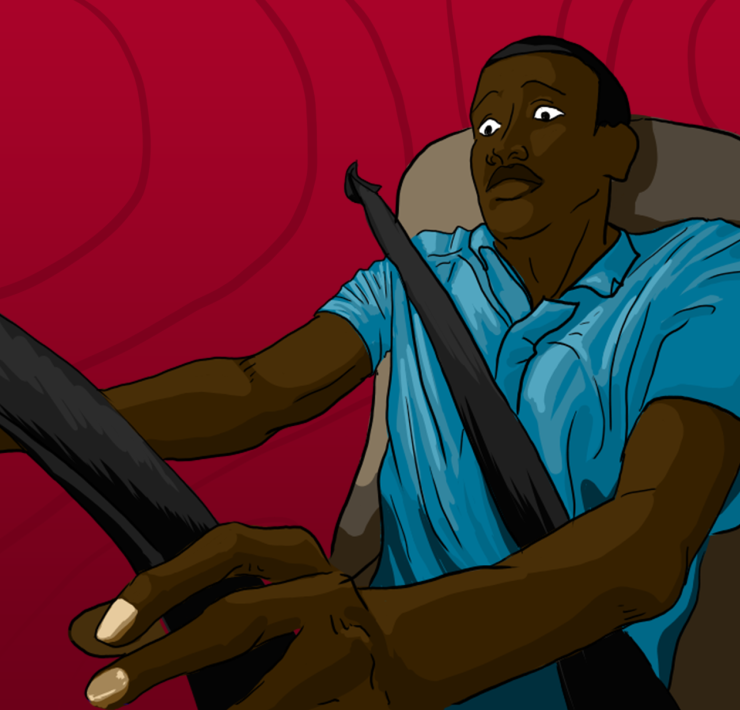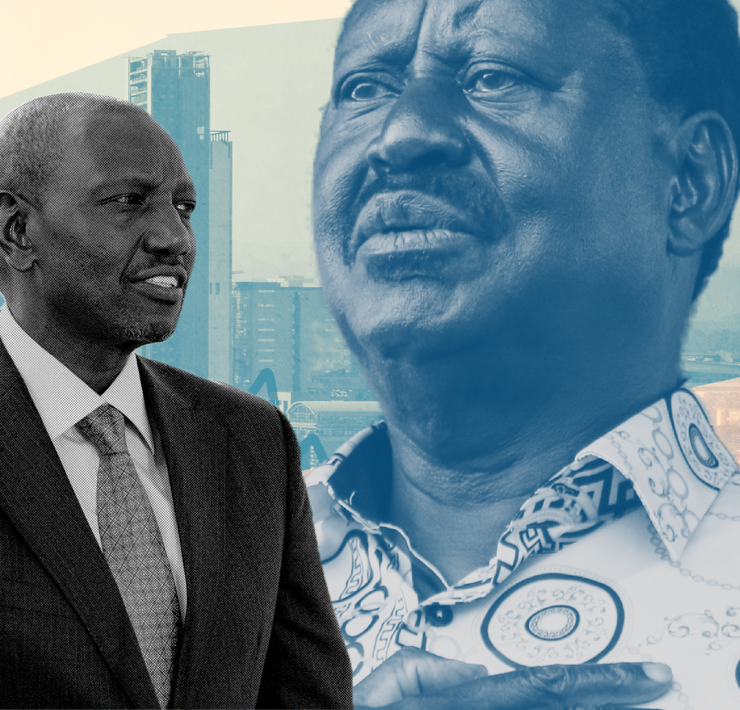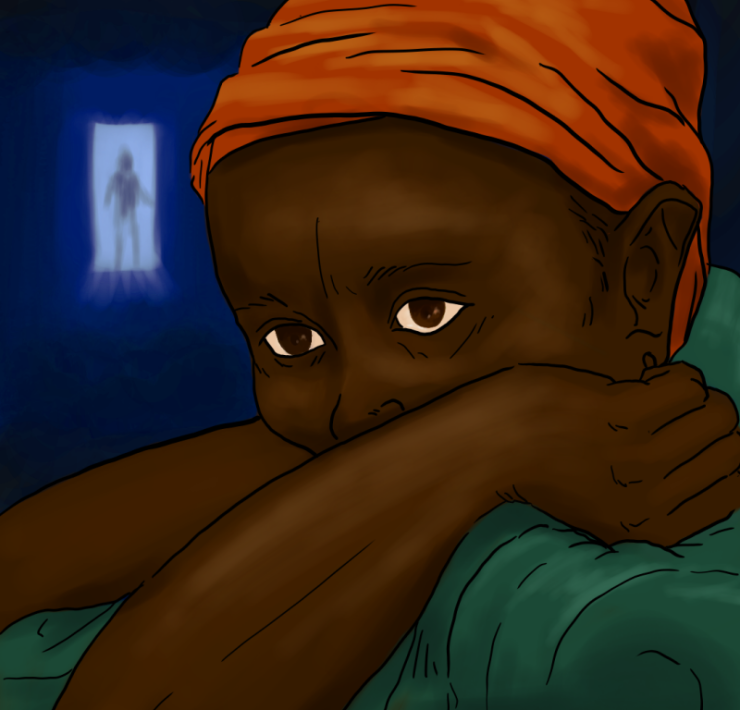Watching the mother-of-all-protests and Raila Odinga’s cavalcade traverse Nairobi the other day, I learned a new phrase. Stochastic terrorism is observed where a charismatic leader uses mass media as a platform to incite violence, while simultaneously disclaiming responsibility for the violence. Carefully choosing his words he (the leader) – for it is invariably a ‘he’ – identifies a population that he can manipulate, groom if you like, over time, and prime them with a steady stream of conspiracy theory, slogans and identifier labels. The labels concretise groupthink. Them against us. Us against them. Us against him. You get my drift.
D-day comes after a series of ultimatums and the leader says “go for it” – the crowds surge and the leader waits to see what the results will be. When the action fails to achieve his stated objectives, he claims victory and announces a programme of intensification, i.e. repeating the action ad nauseum until success, or until he is finally abandoned by the ever dwindling number of financial supporters, tired of funding his quixotic tilts at the windmills of power, or simply weary of bailing and burying their relatives who recklessly heed every call from the leader.
Donald Trump and Jair Bolsonaro are both alleged to be practitioners of this dark art.
Stochastic refers to the statistical probability that words will cause violent action, even though the specific act cannot be predicted. All that is known is that certain types of amplified speech will result in violence somewhere at the end of the chain. On 20 March 2023, ABH, GBH, robbery, burglary, vandalism and arson, are among the violent acts perpetrated by supposed Azimio La Umoja One Kenya supporters during the nationwide protests called on that day by Azimio leader Raila Odinga.
Now, Azimio’s leadership is on the record calling for peaceful mass action. But my preliminary readings in this new area of public order law research tell me that the practitioner of stochastic terrorism is careful not to call for violence in so many words. She seeks to avoid responsibility for the violent acts of persons incited by her speech and conduct. She is well aware that there are laws which criminalise incitement to violence, but is equally aware that proving these charges in a court of law requires evidence that her words were “calculated” and amount to evidence of “intention.” Who is responsible? That is hard to prove and fairly easy to discount.
Who is responsible? Our history shows that the police will inevitably kill someone in these situations – on 20 March 2023 William Manyange, a 21 years old student at Maseno University died after being shot through the neck as he and other protestors ran at the Maseno Police lines. The police fired live bullets at them.
Despite a smorgasbord of grievances to exploit, to me, the Azimio opposition consistently uses mass media in an incendiary rather than illuminating way. Azimio’s leaders are so averse to debate on the merits of their positions that they have started a boycott against media that report to their disliking.
And yet, Azimio’s demands are not completely unreasonable, but their conduct often is.
Leaving to one side (for the time being) the demand that the government lower the cost of living by Monday next week, I would give Azimio everything they are currently demanding (an IEBC to the satisfaction of Raila Odinga and even the full server reports from Smartmatic) in a flash, and it will not change their current position. In all likelihood, I suspect Azimio’s disruptive campaign will only alienate a larger and larger portion of the many millions who may sympathise with their causes but did not vote for them.
The ultimate hardcore Azimio position that Raila Odinga won the last election, and President William Ruto should therefore quit forthwith, is not borne out by the facts. All necessary data was available to know who won even before the announcement of the result, and those who have taken the trouble to add the numbers up are in agreement (save for Odinga’s whistleblower’s claims).
There are facts that Azimio cannot explain away, for example, even in areas where Raila got more votes than in 2017, his net position did not improve. Raila got 1,009,107 votes more in 2022 in 29 counties and in the diaspora but at the end of the day, his final national tally was only 205,800 more votes than in 2017. The voter register in these 29 counties had meanwhile grown by 2.5 million over the 5 years. It is also a fact that there was a large-scale refusal to vote for either Raila or Ruto. More registered voters (7.7 million plus) stayed at home on 9 August than voted. Azimio took only 31 percent of the registered vote, and Kenya Kwanza got 32 percent.
Finally, Raila Odinga got 803,307 votes fewer than he did in 2017 across 18 stronghold counties where turnout dropped by 10.5%, a notional loss of support of about 465,000 votes. Bungoma swung 32% against him, Vihiga by 27% while Kakamega, Mombasa, Makueni, and Kilifi dropped between 12% and 16% respectively. He lost 5% to 8% of the vote share in Machakos, Nairobi, Kitui, Bomet, Busia and Kwale.
And so in my reading, Odinga lost by a narrow margin for all these reasons, and a few more.
But still, within the Azimio communications, we observe a complete denial of these facts (unless new ones emerge out of the server). And my conclusion is that we are now dealing with the sort of people I really fear; fanatics. Such people exist on both sides of our predominant political opinion. If they are stoked, costumed and stroked a certain way they could transform into the predictable mad bad actors on our national stage. Do we want Raila to be held responsible for them? Raila Odinga is a longstanding leader within a wider progressive movement, but this series of futile or violent protest actions will reduce him to a caricature: Lenin-in-a-Lexus if you like. That is not a good result for Kenya. My unsolicited advice to Azimio is to dial down the rhetoric. Use the institutions in which you are well represented. Check the government and work to win more converts to your cause. That is all we ask of Azimio.
Author
-
Mwalimu Mati is a Kenyan lawyer and governance consultant with over 25 years of work experience in the fields of economic governance, anti-corruption, research, advocacy and publication. Mati was the Chief Executive Officer of Mars Group Kenya, one of Kenya’s leading anti-corruption and fiscal transparency watchdogs, as well as publisher of www.marsgroupkenya.org, in its time Kenya’s largest governance web portal which specialised in anti-corruption and financial analysis. Previously, Mati was Executive Director of Transparency International (2006-2007), before which role he served the same organization as Deputy Executive Director (2002-2006). Mati cut his teeth in the 90s working as Programme Officer at the Public Law Institute, where he worked for close to a decade. Driven by his life-mission which is to empower citizens to demand accountability by sharing knowledge, Mati has been at the forefront in the provision of information resources of all forms and shapes to the public as he seeks to promote transparency in public and corporate sectors. Mati consults for Kenyan and international corporations and development agencies in strategy development, programme review and analysis, due diligence background checks and his specialist field of governance and anti-corruption. Mati is widely published locally and internationally, and has led in the writing and publication of some of Kenya’s most ground breaking governance and anti-corruption reports
Mwalimu Mati is a Kenyan lawyer and governance consultant with over 25 years of work experience in the fields of economic governance, anti-corruption, research, advocacy and publication. Mati was the Chief Executive Officer of Mars Group Kenya, one of Kenya’s leading anti-corruption and fiscal transparency watchdogs, as well as publisher of www.marsgroupkenya.org, in its time Kenya’s largest governance web portal which specialised in anti-corruption and financial analysis. Previously, Mati was Executive Director of Transparency International (2006-2007), before which role he served the same organization as Deputy Executive Director (2002-2006). Mati cut his teeth in the 90s working as Programme Officer at the Public Law Institute, where he worked for close to a decade. Driven by his life-mission which is to empower citizens to demand accountability by sharing knowledge, Mati has been at the forefront in the provision of information resources of all forms and shapes to the public as he seeks to promote transparency in public and corporate sectors. Mati consults for Kenyan and international corporations and development agencies in strategy development, programme review and analysis, due diligence background checks and his specialist field of governance and anti-corruption. Mati is widely published locally and internationally, and has led in the writing and publication of some of Kenya’s most ground breaking governance and anti-corruption reports







